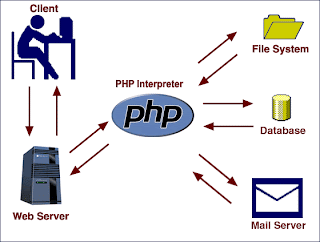PHP development began in 1994 when the developer Rasmus Lerdorf wrote a series of Common Gateway Interface (CGI) Perl scripts, which he used to maintain his personal homepage. The tools performed tasks such as displaying his résumé and recording his web traffic. He rewrote these scripts in C for performance reasons, extending them to add the ability to work with web forms and to communicate with databases, and called this implementation "Personal Home Page/Forms Interpreter" or PHP/FI. PHP/FI could be used to build simple, dynamic web applications.
PHP is a server-side scripting language designed for web development but also used as a general-purpose programming language. PHP is now installed on more than 244 million websites and 2.1 million web servers. Originally created by Rasmus Lerdorf in 1995, the reference implementation of PHP is now produced by The PHP Group. While PHP originally stood for Personal Home Page, it now stands for PHP: Hypertext Preprocessor, a recursive acronym.
PHP code is interpreted by a web server with a PHP processor module, which generates the resulting web page: PHP commands can be embedded directly into an HTML source document rather than calling an external file to process data. It has also evolved to include a command-line interface capability and can be used in standalone graphical applications.
PHP is free software released under the PHP License, which is incompatible with the GNU General Public License (GPL) due to restrictions on the usage of the term PHP. PHP can be deployed on most web servers and also as a standalone shell on almost every operating system and platform, free of charge.

No comments:
Post a Comment